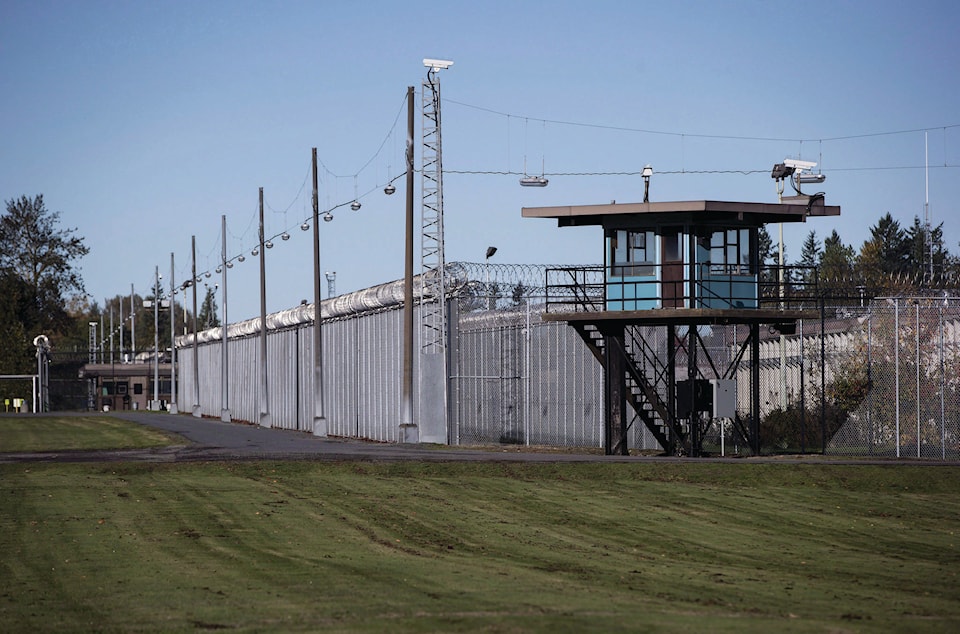VANCOUVER — Jennifer Larue just wants her husband to be able to hold their baby.
But COVID-19 outbreaks at federal prisons and the subsequent lockdown to prevent the virus spread means Larue’s husband, Norman, hasn’t been able to see his wife or children in person for weeks.
“It’s extremely difficult,” she said. “People need to know these are human beings.”
She is among several family members of inmates, along with the union representing prison guards, expressing a growing concern about segregation-like conditions in prisons and the potential for violence after lockdowns are lifted.
Norman, who was convicted of first-degree murder in 2013 and is serving his sentence at Abbotsford’s Pacific Institution, is one of many inmates in the country confined to prison units as Correctional Service Canada works to contain the spread of the novel coronavirus among the prison population.
COVID-19 has swept through several federal prisons, with the worst outbreak occurring in B.C.’s Mission Institution.
More than 130 inmates and staff and inmates at the prison in the Fraser Valley tested positive for the illness and one prisoner died.
British Columbia’s provincial health officer Dr. Bonnie Henry declared the outbreak at Mission over last week, adding that procedures used to limit the spread of COVID-19 there are now being used at federal correctional facilities across the country.
During the lockdown, prisoners are confined to their units with minimal time to go outside.
Units, a term for prison cells organized together, can vary in size depending on the prison. A standard unit at Mission is roughly 30 to 40 people.
The length of lockdowns across the country also varies.
The lockdown at Mission is into its thirteenth week, Larue’s husband’s unit has been locked down for two weeks, while prisons in Ontario have been on lockdown for up to 11 weeks.
Joanne Fry, whose son, Nathan, is serving a 25-year sentence at Mission, said there’s a growing concern over what happens after lockdowns are lifted.
“Thirteen weeks in a cage the size of your (bathroom) has been pretty devastating,” she said in an interview. “Usually when (prisoners) get out from prolonged isolation, the violence and problems escalate.”
Fry, who has joined a proposed class-action lawsuit alleging Correctional Service Canada failed to protect Mission prisoners from the virus, said she’s worried the problems facing inmates will be ignored by the outside world.
“We’re really in a pretty scary place right now,” she said.
Access to skills training and gatherings such as Narcotics Anonymous have been limited or cancelled, leaving prisoners with more spare time and fewer outlets to release their energy, Fry said.
Kelly, who didn’t want her last name used for fear of her husband would be targeted for her comments, can hear shouting and raised voices in the background of her nightly calls with her husband who is jailed at Beaver Creek Institution in Ontario.
“It’s brewing and to be honest, I’m shocked it hasn’t already happened,” she said, referring to potential violence.
“When I speak to my husband, he says tensions are really high,” she said in an interview from Ottawa.
Her husband is confined with 10 other inmates and allowed out 1 1/2 hours a day and in a much-reduced space than before.
He leaves his room to call her once a day – instead of the usual four times – over concerns he’ll be attacked by other inmates.
Kelly said she’s concerned about the mental toll inmates are being placed under, with an inability to visit family members throughout the pandemic except by video call for 30 minutes once a week, if they’re lucky.
“These guys thrive off their contact with their family,” she said. “It’s their only support system.”
Jeff Wilkins, the president of the Union of Canadian Correctional Officers, said he is concerned about what happens when stringent confinement measures are lifted.
“We work in one of the most dangerous environments in the country and we’re only going to increase that danger if we keep those tight restrictions,” he said.
The stress of working through the pandemic has been compounded by mixed communication from corrections to the union about protective gear and the supply of equipment such as masks.
When the pandemic emerged, guards were discouraged by Correctional Service Canada from wearing protective health gear, Wilkins said. That has now been replaced with punishments for not wearing that same gear.
Larue and Fry both say they want Correctional Service Canada to be more transparent with its future plans to allow visitors as well as the ongoing treatment of inmates.
Sav Bains, a regional director of health services for the correctional service, said support for inmates with mental health concerns has continued throughout the course of the pandemic.
He said he hasn’t seen any reports of violence in regards to the isolation and lockdowns implemented at penitentiaries.
“We are obviously monitoring it quite closely,” Bains said, adding that Correctional Service Canada is working closely with inmates to keep them informed of the next phases of reopening.
